Jazz, a genre born out of the vibrant rhythms and soulful melodies of the African-American communities in the United States, has been a transformative force in the global music scene. It’s a genre that invites improvisation, celebrates individual expression, and thrives on the spontaneity of the moment. From the lively streets of New Orleans to the bustling clubs of Harlem, jazz has echoed through time, influencing countless musicians and captivating audiences worldwide.
This article seeks to take you on a journey through the annals of jazz history by presenting the 20 best jazz songs ever recorded. These songs, handpicked for their artistic merit and historical significance, span the breadth of jazz, from bebop to avant-garde, from swing to free jazz. They represent the works of some of the most influential jazz artists like Miles Davis, John Coltrane, and Ella Fitzgerald, whose contributions have shaped the genre into what it is today.
So, whether you’re a seasoned jazz enthusiast or a curious newcomer, these 20 songs offer a glimpse into the rich tapestry of jazz music. Let’s dive in and explore these timeless masterpieces that continue to inspire and move listeners around the world.
For a more thorough understanding of jazz, consider exploring our feature on the best jazz albums of all time. This article presents an insightful exploration into the world of jazz, highlighting a selection of exceptional albums that have been instrumental in shaping the landscape of various types of jazz music.
1. So What by Miles Davis
“So What” by Miles Davis is a monumental piece in the world of jazz. Featured on the influential 1959 album “Kind of Blue,” it stands as one of the definitive works of modal jazz.
The song’s core theme resides in its simplicity and space, contrasting with the complex bebop style popular at the time. “So What” opens with a hauntingly beautiful bass line, setting the stage for the melody played by the trumpet and saxophone.
Davis’s use of the Dorian mode, a scale with a minor feel, contributes to the cool, laid-back mood of the piece. This innovative approach opened new avenues for composition in jazz, influencing countless musicians.
A fun fact about “So What” is that it only uses two chords throughout the entire song, a rarity in jazz music, showcasing Davis’s ability to create something extraordinary from the simplest elements.
In summary, “So What” is a masterclass in minimalism and modulation, making it an essential listen for any jazz aficionado.
2. A Love Supreme, Pt. I – Acknowledgement by John Coltrane
“A Love Supreme, Pt. I – Acknowledgement” is a masterpiece from John Coltrane’s 1965 album “A Love Supreme.” This song stands as an iconic representation of spiritual jazz, a subgenre that merges faith with the innovative freedom of jazz.
The song starts with a gong crash and cymbal wash, followed by a distinctive bass line setting the tone. The core theme of “Acknowledgement” is Coltrane’s expression of gratitude, conveyed through his intense and passionate saxophone performance.
Coltrane’s melody is built around a four-note motif, representing the four syllables of ‘A Love Supreme.’ In a groundbreaking move, Coltrane chants these words himself in the middle of the piece.
This song introduced a new form of improvisation based on modes rather than chord progressions, marking a significant departure from previous jazz composition styles.
An intriguing piece of trivia about this song is that it was recorded in a single session. This approach allowed the musicians to capture the raw emotion and spontaneity intrinsic to jazz, resulting in a recording that remains powerful and moving to this day.
In essence, “A Love Supreme, Pt. I – Acknowledgement” is not just a song but a profound musical statement, reflecting Coltrane’s deep spiritual vision and his mastery of jazz.
3. My Foolish Heart by Bill Evans
“My Foolish Heart,” a track from Bill Evans’ iconic 1961 live album “Waltz for Debby,” is a testament to his profound musicality and emotional expressiveness1. This interpretation of the classic tune is a masterclass in jazz piano, showcasing Evans’ innovative approach to harmony and rhythm.
Evans’ performance turns this standard into an intimate conversation between melody and harmony. His delicate touch on the keys weaves a rich tapestry of sound, creating an atmosphere of longing and introspection that deeply resonates with listeners.
This song was recorded live at the Village Vanguard, one of New York’s most legendary jazz venues, adding an extra layer of immediacy and authenticity to Evans’ performance. It’s worth noting that the Village Vanguard has served as a launching pad for numerous jazz musicians, adding historical significance to this recording.
Moreover, the song “My Foolish Heart” was originally a popular song that became a jazz standard due to its complex chord progression and potential for improvisation. Evans’ rendition stands out for its emotional depth and technical brilliance, cementing his status as one of the jazz greats.
In essence, “My Foolish Heart” is not just a song but a profound musical journey that demonstrates the transformative power of jazz and Bill Evans’ enduring influence as a pianist and composer.
4. In a sentimental mood by Duke Ellington & John Coltrane
Dimly lit, smoke-kissed corners. A hushed nightclub thrums with murmured conversations, punctuated by the soft croon of a piano. This is the setting for Duke Ellington’s “In a Sentimental Mood,” a ballad as smooth as aged whiskey and twice as bittersweet.
No frantic solos or raucous rhythms here. Ellington’s piano lays down a melody that hangs heavy in the air, each note dripping with longing and nostalgia. Coltrane’s saxophone weaves around it, his smoky tone echoing the shadows clinging to the room’s edges.
It’s a song that burrows deep, seeping into your bones like the ache of an unspoken memory. There’s beauty in the melancholy, a quiet acceptance that even the blues can hold a strange allure. You’re drawn into the emotional vortex, each repetition of the melody deepening the well of yearning.
“In a Sentimental Mood” isn’t a showstopper; it’s a slow burn, a whisper in the ear that lingers long after the last note fades. It’s a reminder that true connection can be found in shared vulnerability, in the quiet moments where hearts speak louder than words ever could.
While composed by Ellington in 1935, this 1962 collaboration with Coltrane remains a landmark recording of the song. Coltrane’s improvisations push the boundaries of the composition, creating a dynamic exploration of emotions that continues to resonate with listeners today.
5. Lonely Woman by Ornette Coleman
Ornette Coleman’s “Lonely Woman” isn’t your typical jazz tune. Forget smooth swing or complex chord progressions – this 1959 masterpiece dives headfirst into the wild waters of free jazz. It’s a raw, emotional cry, a musical rebellion against expectations, and a song that continues to challenge and inspire listeners to this day.
The song opens with a simple, yet unforgettable melody played on Coleman’s alto saxophone. It’s oddly beautiful, like a mournful cry reaching out from the depths of the soul. But unlike traditional jazz melodies, it doesn’t stick to a rigid chord structure, instead floating freely, creating an air of uncertainty and anticipation.
“Lonely Woman” doesn’t have a defined solo section. Instead, the entire song is a canvas for improvisational exploration. Coleman, along with his bandmates (trumpeter Don Cherry, bassist Charlie Haden, and drummer Billy Higgins), weave their instruments into a tapestry of sound, responding to each other in spontaneous bursts of creativity. It’s like watching a musical conversation unfold, each note a brushstroke in a sonic masterpiece.
Released on Coleman’s album “The Shape of Jazz to Come,” “Lonely Woman” was a sonic boom in the jazz world. It challenged everything people thought they knew about the genre, its free-form improvisation and unconventional harmony leaving some listeners bewildered and others mesmerized. The song became a cornerstone of the free jazz movement, inspiring countless musicians to break free from the shackles of tradition and explore the frontiers of musical expression.
But beyond its technical innovations, “Lonely Woman” truly connects because it taps into something primal, something shared by every human being – the ache of loneliness, the yearning for connection, and the desperate hope for understanding. This is what makes the song so powerful, so timeless.
Despite its title, “Lonely Woman” wasn’t originally written about a specific person. Coleman has said that the song is more about “a feeling” than a particular experience.
6. Ornithology by Charlie Parker
In 1946, Charlie Parker, the man nicknamed “Bird,” unleashed a musical whirlwind titled “Ornithology” into the world. This bebop masterpiece took flight not just for its catchy melody and lightning-fast improvisations, but for the way it embodied Parker’s spirit and redefined the boundaries of jazz.
Imagine a playful birdcall soaring through the air, that’s the heart of “Ornithology.” The tune is bright and bouncy, instantly grabbing your attention with its playful twists and turns. It’s like Parker himself, full of personality and bursting with musical ideas.
But “Ornithology” isn’t just a catchy melody. It’s a bebop blitz. Parker’s saxophone dances all over the tune, weaving complex runs and unexpected harmonies that leave you breathless. It’s like watching a master athlete perform impossible feats with effortless grace.
And speaking of birds, listen closely. “Ornithology” isn’t just a clever title; it’s a musical aviary. Throughout the song, you’ll catch playful chirps, flutters, and even calls that echo the melodies of real birds. It’s as if Parker’s saxophone has transformed into a feathered orchestra, painting the sky with music.
Some say the famous “A Love Supreme” by John Coltrane was inspired by “Ornithology,” with its similar bird-like themes and complex chord progressions. A true legacy passed from one musical legend to another!
7. Round Midnight by Thelonious Monk
Thelonious Monk’s “Round Midnight” stands as a monument within the jazz repertoire, exceeding conventional boundaries to become a genre-defining composition. Released in 1944, its unconventional structure challenges expectations, eschewing complex chord progressions in favor of a haunting, minimalist melody built around a four-note motif. This repetition, coupled with Monk’s characteristically angular harmonies, imbues the piece with a melancholic introspection, reflective of the late-night atmosphere its title evokes.
The song’s genius lies in its masterful exploration of space and texture. The opening gong, often cited as a pivotal moment in jazz history, initiates a sonic journey – a stark departure from the bombastic swing of the era. Monk’s piano then takes center stage, its economical phrasing and introspective lyricism weaving a poignant narrative. His improvisations, characterized by dissonant voicings and rhythmic displacement, further contribute to the song’s unique, introspective mood.
“Round Midnight” transcended its early success as a jazz instrumental to become a widely-covered standard. Vocalists such as Frank Sinatra and Billie Holiday adopted the melody, each interpretation further solidifying the song’s emotional resonance and versatility. Beyond its impact on singers, the composition influenced countless instrumentalists, inspiring experimentation with modal approaches and introspective improvisation.
“Round Midnight” merits its inclusion among the greatest jazz compositions not just for its captivating melody and evocative atmosphere, but for its historical significance and lasting impact on the genre. Its innovative structure, masterful use of space, and ability to transcend categorization solidify its place as a timeless masterpiece.
8. I Got It Bad And That Ain’t Good by Oscar Peterson Trio
Duke Ellington’s sultry ballad, “I Got It Bad (And That Ain’t Good),” transcends mere love song. It’s a 1946 masterpiece, where simmering desire collides with bittersweet doubt, poured into Duke’s signature bluesy harmonies. Oscar Peterson’s 1963 piano trio rendition became a jazz landmark.
Peterson’s virtuosic runs weave around bassist Ray Brown’s walking bassline and Ed Thigpen’s swinging brushes, crafting a smoky sonic canvas for the song’s emotional turmoil.
Peterson’s masterful improvisation mirrors the lyrics, building in intensity with each verse. His ballad touch during the melancholic verses contrasts with playful flourishes as the protagonist grapples with love’s double-edged sword. This interplay between melody and improvisation captures the song’s essence: the exquisite pain of an intoxicating infatuation.
More than a jazz standard, “I Got It Bad” cemented Peterson’s reputation as a piano giant. His interpretation solidified the song’s place in the jazz canon, influencing countless musicians and igniting countless love affairs – good or bad.
9. A Night in Tunisia by Dizzy Gillespie
Dizzy Gillespie’s 1942 composition, “A Night in Tunisia,” transcends mere genre classification. It’s a sonic voyage, a bebop odyssey traversing the sands of North Africa, a testament to innovation and daring musical exploration.
Forget predictable chord progressions and saccharine melodies. “A Night in Tunisia” plunges headfirst into the swirling vortex of bebop, its opening chant of “Tunis, Tunis, Tunis” a hypnotic mantra leading us into a bustling marketplace of sound. Then, Gillespie’s trumpet explodes, not with soaring ballads, but with lightning-fast runs and unexpected harmonic turns. It’s a pyrotechnic display of virtuosity, a testament to bop’s electrifying energy.
But within this frenetic storm lies a melodic oasis. John Lewis’s piano and Oscar Pettiford’s bass weave a haunting counterpoint, employing modal scales reminiscent of the Middle East. This stark contrast between fire and water is the essence of “A Night in Tunisia.” It’s a musical tapestry woven from the threads of African rhythms, Latin syncopations, and even a dash of Bach, a celebration of cultural fusion and artistic audacity.
Gillespie’s genius lies in crafting a piece that’s not merely technically dazzling, but profoundly evocative. “A Night in Tunisia” captures the spirit of bebop: restless, rebellious, and pushing the boundaries of musical language. It became a signature tune for Gillespie and a cornerstone of the movement, inspiring generations of musicians with its audacious experimentation.
10. Fly Me to the Moon by Frank Sinatra
Frank Sinatra’s “Fly Me to the Moon” isn’t just a serenade; it’s a playful yet poignant exploration of love and interstellar yearning. Ditching predictable melodies, the song blasts off on a pulsating bassline, its infectious groove creating an intimate atmosphere. Sinatra’s signature croon then paints dreamscapes of cosmic adventure and whispered promises, his voice a smooth counterpoint to the playful melody.
But beneath the lighthearted surface lies a deeper longing. “In other words, hold my hand,” Sinatra murmurs, a vulnerable plea disguised in the language of space exploration. This duality is the song’s charm – a playful waltz with love’s yearning, a moonlit escape hiding a touch of vulnerability.
“Fly Me to the Moon” transcended mere romance. Its infectious spirit caught the attention of NASA, becoming an unofficial anthem for the Apollo missions. Astronauts danced among the stars to Sinatra’s voice, blurring the lines between earthly desire and cosmic dreams.
More than a catchy tune, “Fly Me to the Moon” showcases Sinatra’s charisma and the universality of love. It can spark a moonlit waltz in a bustling club or inspire quiet reflection under the stars. This musical rocket ship, fueled by Sinatra’s vocals and a boundless melody, serves as a timeless reminder that love, like the cosmos, is limitless.
11. Take the A Train by Duke Ellington
Composed in 1941, Duke Ellington’s “Take the A Train” transcends mere music, serving as a sonic portrait of Harlem’s vibrant cultural pulse in the 1940s. Its catchy melody and dynamic rhythm capture the bustling energy of the neighborhood, its joy echoing through brass fanfares and bluesy clarinet calls.
Ellington crafts a clever metaphor, using the “A Train” as a journey through Harlem’s diverse streets and landmarks. Each note paints a picture, whether the celebratory swagger of Sugar Hill or the soulful whispers of smoky jazz clubs. Improvisation throughout the song mirrors the community’s ever-evolving spirit, a constant dance between joy and resilience.
But “Take the A Train” resonates far beyond its sonic charm. It became a cultural touchstone for Harlem, solidifying its artistic expression and enduring spirit. The song’s influence transcended genre, inspiring artists across the spectrum and solidifying its place as a timeless testament to a vibrant era.
12. Ella Fitzgerald and Louis Armstrong – ‘Summertime’
Born from Gershwin’s 1935 opera “Porgy and Bess,” “Summertime” transcends operatic boundaries to become a timeless jazz standard. Fitzgerald’s honeyed vocals paint a melancholic portrait of Southern heat, yearning for cooler days, while Armstrong’s gravelly counterpoint adds a soulful depth. Their playful scatting dances around Gershwin’s lullaby melody, making it both mournful and playful.
This seemingly simple song packs a historical punch. It’s one of the first operatic arias sung by Black characters on a major American stage, breaking racial barriers and influencing generations of jazz vocalists. Its enduring popularity, covered by over 25,000 artists, speaks to its universal themes of longing, resilience, and finding solace in shared experiences.
Did you know “Summertime” is based on a Ukrainian lullaby Gershwin heard by chance? This cross-cultural influence adds another layer of intrigue to this iconic jazz masterpiece.
13. Hat and Beard by Eric Dolphy
Forget smooth sailing and mellow grooves. Eric Dolphy’s “Hat and Beard” yanks you into a playful sonic vortex, twisting familiar jazz harmonies into pretzels and bouncing rhythms like supercharged rubber balls. This 1964 track wasn’t just a song; it was a sonic salute to the one and only Thelonious Monk, a mischievous wink disguised as a free-jazz frenzy.
Dolphy, a multi-instrumentalist with a wanderlust for musical boundaries, threw tradition out the window with “Hat and Beard.” This wasn’t your typical jazz serenade. Instead, think cartoon chase scene set to a big band on caffeine, with Dolphy’s bass clarinet leading the cacophony like a gleeful pied piper. The instrument, rarely seen as a jazz frontman, becomes a mischievous jester, squawking and twisting melodies like a flock of birds on helium.
But beneath the surface of this sonic mayhem lies a deep respect for Monk’s legacy. Dolphy’s improvisations, while defying convention, echo Monk’s angular melodies, rhythmic quirks, and mischievous humor. It’s a love letter to a musical giant, delivered with a wink and a nose honk.
“Hat and Beard” wasn’t just a revolutionary tune; it was a declaration of artistic freedom. It paved the way for countless musicians to break the mold, embrace the unexpected, and find joy in the pure exhilaration of sonic exploration. So, the next time you crave a jazz experience that’s a little different, a little wild, and a whole lot of fun, put on “Hat and Beard” and let Dolphy whisk you away on his warped funhouse mirror of musical genius.
This entire sonic adventure, the album “Out to Lunch,” was recorded in just one day! Talk about capturing lightning in a bottle.
14. I Didn’t Know About You by Johnny Hodges
Johnny Hodges’ rendition of “I Didn’t Know About You,” recorded with his orchestra in November 1960, is a masterpiece of jazz balladry. This track, originally composed by Duke Ellington, glides into the scene like a late-night whisper in a smoky jazz club. In this song, Hodges, a saxophonist best known for his work with Duke Ellington’s big band, creates an atmosphere of hushed, heartfelt confession, bathed in the moonlight hues of newfound love and quiet wonder.
His velvety touch and lyrical alto saxophone paint a sonic picture as intimate as a candlelit conversation. The saxophone sings with each note a sigh of smitten innocence, weaving a melody that dances like moonlight on a velvet cushion. Accompanying this, the piano chords shimmer like twilight diamonds, while the drums add a gentle pulse, giving a heartbeat to the hushed atmosphere.
The song, with its simple revelation of the unexpected joy of discovering someone who sets your soul alight, is enhanced by the straightforward yet profound narrative crafted by lyricist Bob Russell. Hodges’ performance perfectly channels this sentiment, bending notes with an aching tenderness that echoes the delicate emotions at play.
“I Didn’t Know About You” stands as a historical footnote in the jazz world. Released in the era when bebop’s complexity and speed were prominent, it serves as a poignant reminder of the soulful elegance of earlier swing. This track showcases the genre’s versatility and emotional depth, emphasizing that jazz also embraces intimacy and heartfelt storytelling.
Johnny Hodges’ ‘I Didn’t Know About You’ showcases the depth and artistry in jazz. While not a ‘cool jazz’ piece, it reflects the genre’s richness. For a deeper dive into cool jazz, see our 10 Best Cool Jazz Albums article.
15. Goodbye Pork Pie Hat by Charles Mingus
“Goodbye Pork Pie Hat,” is a profound piece by jazz legend Charles Mingus. Released in 1959 on the album “Mingus Ah Um”, this song is an emotional tribute to saxophonist Lester Young. Mingus, known for his innovative bass techniques, creates a melancholic atmosphere with bluesy undertones, reflecting Young’s life and struggles. The song title refers to Young’s signature pork pie hat.
The composition stands out due to its haunting melody, complex harmonies, and the improvisational freedom it allows. It’s been covered by numerous artists, demonstrating its enduring relevance in the jazz world. Historically, it serves as a bridge between traditional and modern jazz, marking a significant turning point in jazz music. This masterpiece is not just a song, but a heartfelt homage, cementing Mingus’ place among jazz greats.
16. Turiya And Ramakrishna by Alice Coltrane
“Turiya and Ramakrishna” is a mesmerizing piece by Alice Coltrane, an influential figure in the jazz world. Featured on her 1970 album “Ptah, the El Daoud,” this song showcases Coltrane’s unique blend of spiritual jazz. The title refers to Coltrane’s spiritual name, Turiya, and Hindu deity, Ramakrishna, reflecting her deep involvement in spirituality.
The song is characterized by its soulful piano riffs and bluesy undertones, creating a meditative ambiance. Coltrane’s masterful use of modal jazz elements sets this composition apart. Historically, it marked a shift towards spirituality in jazz music, significantly influencing future artists.
This song isn’t just a musical piece but a spiritual voyage, highlighting Coltrane’s innovative contribution to jazz. Its cultural impact extends beyond music, offering listeners a glimpse into Coltrane’s spiritual journey.
17. I Guess I’ll Hang My Tears Out To Dry by Dexter Gordon
“I Guess I’ll Hang My Tears Out To Dry” is a stirring composition by Dexter Gordon, a renowned tenor saxophonist. This song, featured on his 1962 album “Go,” displays Gordon’s rich and emotive sound.
Originally a Broadway number, Gordon’s interpretation breathes new life into the song. His rendition is filled with elongated, mournful notes that encapsulate the sadness of the lyrics, while the underlying rhythm maintains a steady, almost hopeful pace.
One fascinating tidbit about this song: the entire “Go” album was recorded in just one day, underscoring Gordon’s extraordinary improvisational skills. This track stands as a testament to his ability to transform any piece into a jazz classic.
In essence, this song is more than just a musical piece; it’s an emotional odyssey that highlights Gordon’s influential contributions to jazz. It beautifully demonstrates how jazz can embody and express human emotion in its rawest form.
18. Body and Soul by Coleman Hawkins
“Body and Soul” is a timeless classic by the celebrated jazz artist, Coleman Hawkins. This song, released in 1939, is considered one of the most influential jazz recordings of all time.
Hawkins’ rendition of “Body and Soul” is a beautiful blend of melody and improvisation. His tenor saxophone takes center stage, weaving intricate musical phrases that convey deep emotion.
Interestingly, this recording was ground-breaking for its time. It was one of the first instances where a jazz musician deviated significantly from the original melody, paving the way for more experimental jazz music.
In essence, “Body and Soul” is more than a song; it’s a landmark in jazz history that showcases Hawkins’ innovative style. It’s a testament to his ability to craft deeply emotional narratives through his music and is a must-listen for any jazz enthusiast.
19. Harvest Time by Pharoah Sanders
“Harvest Time” is a profound piece by the avant-garde jazz saxophonist, Pharoah Sanders. Released in 1977, this tranquil composition breaks away from Sanders’ earlier, more intense free jazz style.
Sanders’ saxophone in “Harvest Time” is gentle and contemplative, painting a serene auditory landscape that invites listeners to immerse themselves fully[. The song’s core theme revolves around nature’s cycles, evoking images of pastoral tranquility and the peaceful rhythm of rural life.
One interesting fact about this piece is that it marks a turning point in Sanders’ musical journey. It showcases his transition towards a more melodic and harmonious style, setting the stage for his later works.
In summary, “Harvest Time” is a masterful reflection of Sanders’ musical evolution. Its soothing melodies and thematic depth make it a standout piece in the realm of jazz music.
20. That’s How I Feel by Sun Ra
“Sun Ra’s “That’s How I Feel” is a jewel in the crown of jazz music. Released in 1978, this song is part of the album ‘Lanquidity’.
“That’s How I Feel” is a fusion of funk, jazz, and electronic music, demonstrating Sun Ra’s innovative approach to composition The core theme of the song is emotional expression, conveyed through the juxtaposition of various musical elements.
Sun Ra’s use of synthesizers in this piece was groundbreaking for its time, adding an otherworldly layer to the track. This exploration of new sounds and textures is a testament to his forward-thinking approach.
An interesting fact about Sun Ra is that he was one of the first jazz musicians to perform on electronic keyboards. His pioneering work has heavily influenced the genre’s evolution.
In summary, “That’s How I Feel” is a testament to Sun Ra’s creative genius, making it a must-listen for all jazz enthusiasts.
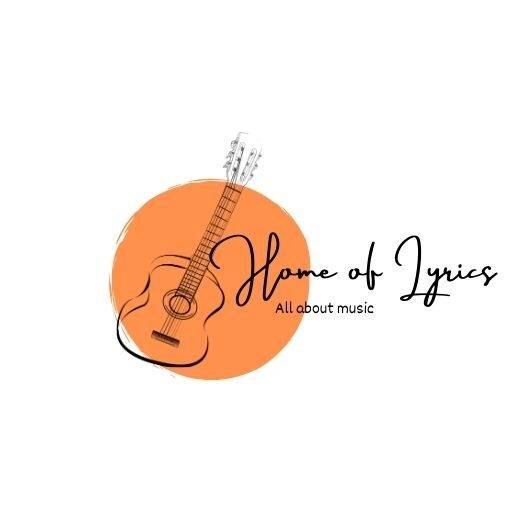




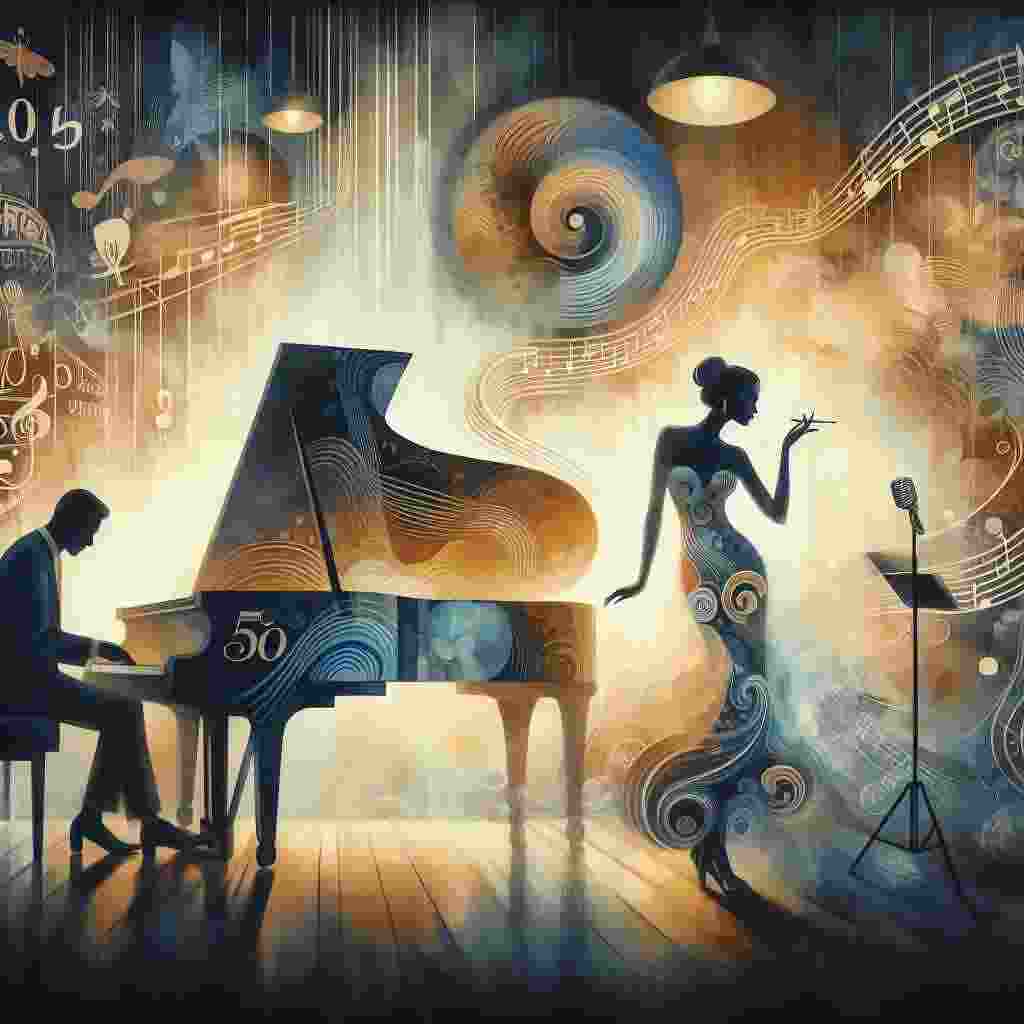
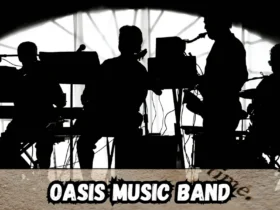

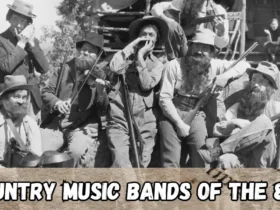
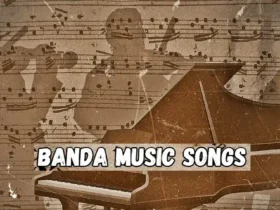




Ahaa, its nice conversation regarding this article here at this
weblog, I have read all that, so at this time me
also commenting at this place.
I’ve been browsing on-line more than 3 hours lately, yet I
by no means discovered any attention-grabbing
article like yours. It is pretty value enough for me.
In my view, if all site owners and bloggers made just right
content as you probably did, the web will probably be a lot more useful than ever before.